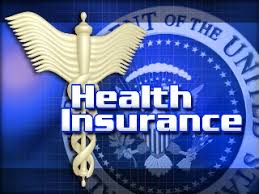For the second time this week, medical experts have issued revised guidelines for women’s cancer screenings. On Monday, the U.S. Preventive Services Task Force advised that women wait until age 50 to begin mammography screening, after which they should be checked every other year instead of annually as the previously established guidelines recommended. And on Friday, the American College of Obstetricians and Gynecologists (ACOG) issued revised guidelines for cervical cancer screening, recommending that women in the U.S. wait until age 21 to have their first Pap test and follow-up testing every two to three years depending on a woman’s age—revisions the ACOG says are based on studies that suggest earlier and more frequent testing causes more harm than good.
The Pap test has been used for more than 50 years to find changes in the cells of the cervix that could lead to cancer. Prior recommendations called for cervical cancer screening to begin three years after a woman became sexually active or by age 21, whichever came first, with annual follow-up testing. But under the new ACOG guidelines, women should get their first Pap test at age 21, regardless of the onset of intercourse, with re-testing once every two years until age 30. Women 30 and older who’ve had three consecutive negative tests and no abnormal history should be re-screened only once every three years. Guidelines for older women remain unchanged. After no abnormal Pap result for 10 years and three or more negative results consecutively, women can stop the test at age 65 or 70.
“We really felt that the downsides of more frequent screening outweighed any benefits,” said Dr. Alan G. Waxman, a professor of obstetrics and gynecology at the University of New Mexico, who drafted the new guidelines. “More testing is not always more intelligent testing.” Waxman explains that while the rate of infection with human papillomavirus (HPV), which can cause cervical cancer, is high in sexually active teens, the immune system of younger women typically clears HPV within one or two years. He added that recent research has shown that procedures to remove precancerous tissue weaken the cervix, increasing the risk of preterm birth.
Dr. Jennifer Milosavijevic, a specialist in obstetrics and gynecology at Henry Ford Health System in Detroit, supports the guideline changes. “Women do not get cervical cancer first. They acquire HPV, the sexually transmitted virus that causes precancerous abnormalities of the cervix and cervical cancer. It takes years to progress from an HPV-infection to full-blown cervical cancer,” Milosavijevic said. “These new guidelines will allow us to avoid doing unnecessary procedures on the sexually active adolescent female.”
Dr. Milosavijevic says changing the screening interval does not mean that more cervical cancers will be missed, adding that most women who die from cervical cancer were either screened infrequently or not at all. In fact, some doctors feel the new screening guidelines do not go far enough. “There is ample evidence that screening earlier than 25 years is only costly with many false positives,” said Dr. Diane Harper of the University of Missouri-Kansas, who specializes in HPV infections. “The rest of the world is going to an every-five-or-six-year screening interval ... and ACOG is now just endorsing the three-year interval for HPV negative and Pap negative (women).”
In the last 30 years, cervical cancer rates in the United States have dropped more than 50 percent, due largely to widespread use of the Pap test. Rates will probably drop even further due to newer vaccines like Gardasil, which are now approved for girls and women ages 9 to 26 for prevention of HPV. But ACOG says since the vaccines won’t affect cervical cancer rates for 15 to 20 years, they did not play a role in the new screening guidelines. And because such vaccines don’t protect against all types of HPV, Pap tests are and will still be necessary.
The American Cancer Society estimates that 11,270 new cases of cervical cancer will be diagnosed in the U.S. in 2009, and the disease will cause 4,070 deaths.
HEALTHNEWS



